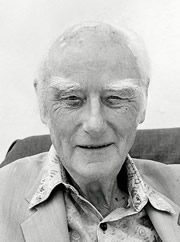When Crick was asked what he would like to contribute in the future, he replied: "I would like to inspire the younger generation to take part in the study of consciousness."

Francis Crick. 1916 – 2004. Credit: Nature
The scientist Francis Crick (Crick), who was involved in the discovery of the structure of DNA, died at the age of 88 after a long battle with cancer.
Crick began his scientific work in the field of physics. He studied the profession at University College London. After World War II, he moved to biology studies, where he dealt with proteins and their crystallography.
His most famous contribution in the field of molecular biology occurred in 1953 in collaboration with his friend James Watson. The two, who studied with the help of X-rays the structure of the deoxyribonucleic acid molecule, known as DNA, came to the conclusion that it is built in the form of a double helix, similar to a coiled ladder.
They opened the article in which they presented their work, which was published in the journal Nature in April 1953 and changed the face of biological science, with the following lines: "We would like to propose a structure for the deoxyribose nucleic acid (DNA) crystal." The proposed structure has new properties, which are of great biological importance."
In 1962, Watson and Crick, together with a third scientist, Maurice Wilkins, won the Nobel Prize for Medicine for their work with DNA. The discovery of the three-dimensional structure of the molecule opened, among other things, the possibility of sequencing the order of the DNA bases, or deciphering the genome. The genome sequences of many living creatures have been mapped to date, including humans.
After that, Crick continued trying to decipher the genetic code, according to which the information in DNA is translated into proteins. He later moved to cognitive science research at the Sock Institute for Biological Research in California. In this field, Crick challenged accepted theories, according to which certain aspects of consciousness are reflected in physiological changes in the brain.
When Crick was asked what he would like to contribute in the future, he replied: "I would like to inspire the younger generation to take part in the study of consciousness."
for further reading:
An article in Nature
Crick's bibliography
Watson and Crick's article on the structure of DNA
